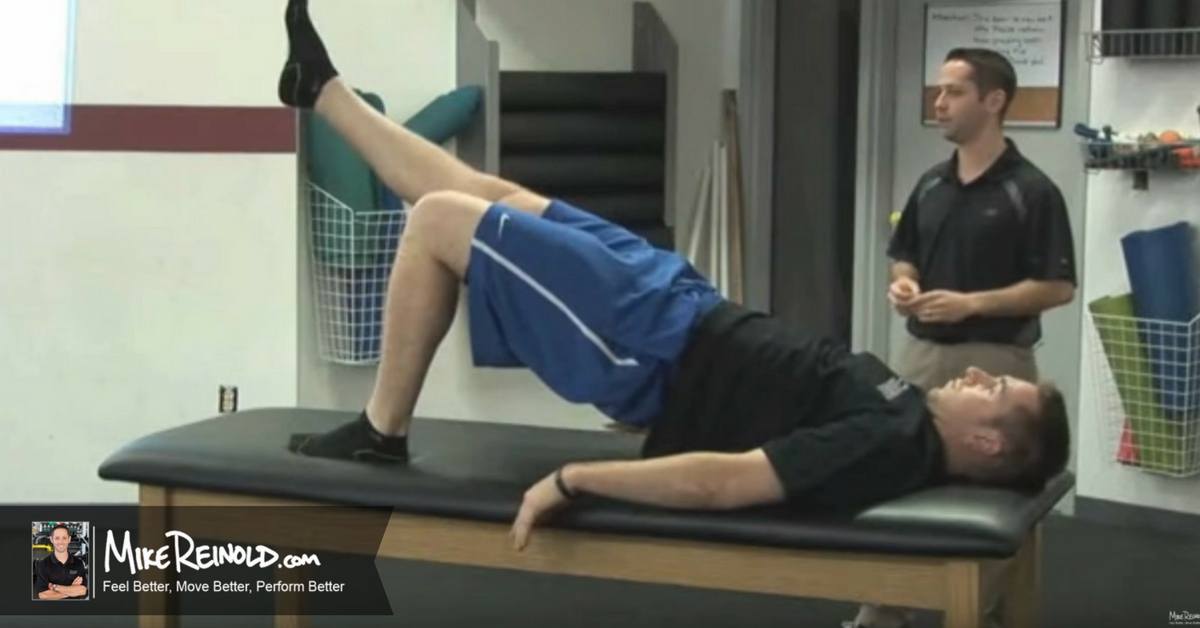
Glute Bridge Exercise Progressions
The bridge exercise is one of the most simple exercises you can perform to start training the glutes to extend the hip. As my patients and athletes progress and learn to master activating the glutes, my next step in the glute exercise progression is to work on stabilizing the core while training the hips to extend.
This is a very important component of core control and a key in preventing low back injuries. The lumbar spine should be able to stabilize while the lower extremity extends, minimizing the stress on the low back.
Below is a great video example of a glute bridge exercise progression that I discuss in my educational program with Eric Cressey, Functional Stability Training for the Core. During the clip, I discuss some of my thoughts of how to train rotary stability during the glute bridge exercise. I even throw in some manual exercise techniques as well. I really love this exercise and use it daily!
 Combining Glute Activity with Rotary Stability Training
Combining Glute Activity with Rotary Stability Training
The exercise begins by bracing and stabilizing your lumbar spine before performing the bridge. Once the person is ready to progress, you can slowly extend the knee to really turn on the plant leg glute while requiring the lumbar spine and pelvis to stabilize and prevent rotation. This is a great way to incorporate rotary stability training with an exercise designed to train the glutes. What a great combo!
This is one of the many great exercise progression Cressey and I discuss in our online educational program , Functional Stability Training for the Core.


 Combining Glute Activity with Rotary Stability Training
Combining Glute Activity with Rotary Stability Training



